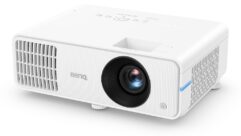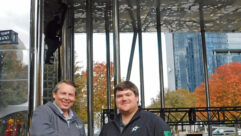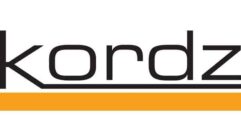
Improving Classroom Boot-Up Time
Michigan school district learns how to create user-friendly classroom AV systems by listening to its teachers.
CHALLENGE: Build robust AV systems for more than 100 high school and middle school classrooms, but make them very quick to set up and easy to use.Alex Ellingsen, senior technology designer for Kalamazoo, MI-based Secant Technologies, agrees. “If the boot-up time was five minutes, a teacher wouldn’t use that technology,” he says. “It really has to be 30 seconds.” With a background primarily rooted in IT systems design, Ellingsen and his team had worked for Bartow extensively in the past — five years earlier, Secant oversaw installation of a fiber optic network for the Lakeview district’s schools.A room with a view“We also had an audio amp that we liked, but it had a fan that made too much noise. So we went with another amp, but it couldn’t show us a bar graph on the display system as we raised and lowered volume levels,” he adds, pointing out the need for a teacher-friendly interface.Putting it together
Michigan’s Lakeview School district spent about $3.5 million to outfit each of its 53 high school and 59 middle school classrooms with AMX-controlled AV systems featuring Epson 821P projectors. Ease of use and quick set-up time were crucial elements of a standard systems design used for all classrooms.
SOLUTION: Create a test classroom, and try out various solutions on faculty members. Then integrate the solution across all classrooms.
TO DALE BARTOW, director of technology services for the Lakeview School District in Battle Creek, MI, it came down to “classroom boot-up time.”
Charged with designing and installing classroom AV systems in two facilities — a brand new high school and another building, the district’s old high school, that was being renovated into a middle school — Bartow made quick set-up time and ease-of-use the project’s mantras.
“We knew we wanted to provide an environment where our teachers could integrate technology into the curriculum, but we kept hearing from them that it takes forever to get (AV) systems ready, and by the time they have things set up, it’s time to shut things down again,” he explains. “In order for them to use the technology, we had to come up with a system that would let them maximize the 90 minutes they had for instruction.”
Each Lakeview classroom features a custom-built, rolling teacher podium that houses a Hewlett Packard DC5100 workstation, a PolyVision Walk & Talk monitor, and an Elmo HV-110Xg document camera. Podiums are connected by a garden-hose-thick cable to a custom-built equipment racks featuring a Sony SRP-X500P mixer/switcher/amp, a Lightspeed LES700IX IR microphone, an AMX NI-700 controller, a Middle Atlantic PD-915R power strip, and an RCA DRC-6300N combo VCR/DVD player.
With the district last year seeking to integrate uniform AV systems that would ultimately put a networked Epson 821P projector and a soundfield featuring four Atlas FAP40T ceiling speakers into each of its high school and middle-school classrooms, Secant won bids encompassing $3.5 million worth of technology.
“A huge component of that bid was the AV,” Ellingsen notes. “And the key was designing a system that wouldn’t intimidate people. Often, technology goes into classrooms and people don’t use it.”
To get in touch with the true comfort level of the faculty, Bartow started off the project by creating what he calls “the classroom of the future.”
“They took a classroom in the old high school and turned it into a prototype room,” Ellingsen explains. “Then Dale had us come in and install all of this technology.”
For each component, myriad equipment models were actually tested by school faculty members to see how well they’d fit into a finished system.
Before the decision was made to use an Elmo HV-110Xg model, “we went through several document cameras, and kicked out the ones we didn’t like,” Ellingsen notes.
Each Lakeview classroom uses a Sony SRP-X500P combo unit, which combines a sound mixer, a video switcher, and an audio amplifier with computer processing ability and an RS232 interface.
After four amplifiers were sampled, the decision was finally made to go with the Sony SRP-X500P — which combines a mixer, a video switcher, and an amp in one box.
“It met our criteria — and we wouldn’t have gotten there without this testing process,” Ellingsen says.
The prototype classroom also yielded data outside the spectrum of AV equipment and software. “Never underestimate how important furniture is when using instructional technology,” Bartow says. “That’s why we spent a lot of time designing custom-built furniture.”
Notable are the rolling teacher podiums, which were custom built to house a Hewlett Packard DC5100 computer workstation, a PolyVision Walk & Talk interactive computer monitor, and the Elmo HV-110Xg document camera.
AUTOMATIC FOR THE PEOPLE
For the Lakeview School District in Battle Creek, MI, creating classroom AV systems that were quick to launch and simple to use required a thoughtfully designed user interface that could intuitively lead teachers through menus.
It also required components that could be completely controlled via AMX technology, needing little or no manipulation from faculty.
“We wanted to meld all of these different components together and make it so you don’t have to do anything but click a button,” says Jeff Beam, a programming specialist for Niles, MI-based TPC Technologies, who worked on the installation of classroom systems in the Lakeview district’s middle school.
For example, system designers understood very quickly that all IR-controlled system components needed to be controllable by “discrete codes” — a combination VHS/DVD player that had dedicated “VCR” and “DVD” remote buttons to switch it from disc mode to tape mode would fit that criteria, whereas a player that had one code to toggle it between the two formats would not.
“We’re sending IR pulses to control the player, and if a device has discrete codes, we can be sure it’s in the correct mode just by sending the correct code,” Beam explains. “The system has got to be able to know what mode the equipment is in. In the world of automation, if you can’t figure out what mode your equipment is in, you’re in a pretty bad state.”
The use of networkable components with combined functionality, such as Sony’s SRP-X500P combo unit, also aided the cause. Obtained by the district at a cost of about $1,000 per unit, according to Beam, the SRP-X500P includes an audio mixer for all sound inputs, a video switcher, and an amplifier. It also has an RS232 interface.
“It made it easier because we could write the code to control it, and we didn’t have to talk to three different boxes,” Beam says.
Based on testing, the decision was made to place other technology — including the Sony SRP-X500P amp, a Lightspeed LES700IX IR microphone, the AMX NI-700 controller, a Middle Atlantic PD-915R power strip, and an RCA DRC-6300N combo VCR/DVD player —in an adjacent custom-built cabinet.
“We needed to give the teachers enough space where they’d still have a desk, but they’d also have technology controls,” Bartow explains. “Basically, there’s an umbilical cord that looks like a big garden hose running from the podiums to the cabinets.”
Perhaps the most useful information derived from the prototype classroom was the input the district and its technology partners got from teachers in regards to designing the user interface — the goal being to come up with an interface that required very few buttons to get a presentation started, and an AV system that could function automatically, with no physical switches or buttons on AV equipment requiring adjustment, and no remote controls that could walk away (see sidebar).
“There was a lot of tweaking based on the input from the teachers,” notes Bill Jung, senior sales specialist for Saginaw, MI-based Innovative Communications, which consulted with Secant on design of the system’s web interface and also provided installation work. “For us, getting the web interface right was the biggest issue — and that was really more from a design point of view. We have plenty of guys on our staff who can write code.” In fact, Jung estimates that his team had at least a dozen meetings with Bartow, going back and forth to try to get the user interface exactly right.
“Our goal was to have the systems in the two buildings all be very similar,” Ellingsen notes. Indeed, systems in all classrooms across both campuses — and even technology designs in specialty rooms, such as those designed for music teaching — share a common interface so that teachers are comfortable using the AV no matter where they are.
“And everything would be put under the control of a web-based interface via AMX (technology),” Ellingsen notes. “And instead of four remotes and 300 buttons to run the classroom, the teacher is presented with just eight buttons.”
Lakeview’s teachers actually ended up with several control options. Using a web-based interface on their HP workstation, they’re presented with an introductory page that includes icons for a limited number of playback sources; they can simply click on playback source icons to access a subset of simple-to-use menus — clicking on the VHS/DVD player icon, for example, would yield a very familiar looking window that has “play,” “stop,” “pause,” “rewind,” and “fast-forward” buttons.
If for some reason their workstation isn’t booted up, and they don’t have time to wait for it to boot, teachers can activate the AV system using an eight-button AMX control panel located in the cabinet. A network operator, meanwhile, can turn all systems on and off and check equipment status such as lamp life over Ethernet.
FOR MORE INFORMATION
AMX
www.amx.com
Atlas Sound
www.atlassound.com
Elmo
www.elmo-corp.com
Epson
www.epson.com
Hewlett-Packard
www.hp.com
Lightspeed
www.lightspeed-tek.com
Middle Atlantic Products
www.middleatlantic.com
PolyVision
www.polyvision.com
RCA
www.rca.com
Sony
www.sony.com
With a universal classroom systems design in place, Ellingsen subcontracted installation out to two firms — Niles, MI-based TPC Technologies would integrate the AV systems into 59 classrooms and one specialty room in the converted middle school; Innovative Communications would install systems in 53 classrooms and six specialty rooms in the new high school.
With the start of the school year just weeks away, TPC Technologies principal Ken Kuespert was still working the bugs out of the middle-school system in early August. “For us, the challenge has been the tight time table we’ve been on — we couldn’t get started until school let out in June,” he says. “And the whole school had to be rewired. But we’re finishing up.”
For its part, Innovative communications completed the new high school install in time for the Fall 2006 semester, and the teacher feedback was as good as it was for the prototype classroom, Bartow says. “It’s been fantastic — the teachers are amazed at what they can do. We’re now going into the middle-school implementation, and we’re hoping that goes even smoother.”
Daniel Frankel is a Los Angeles-based freelance writer. He can be reached at [email protected].










